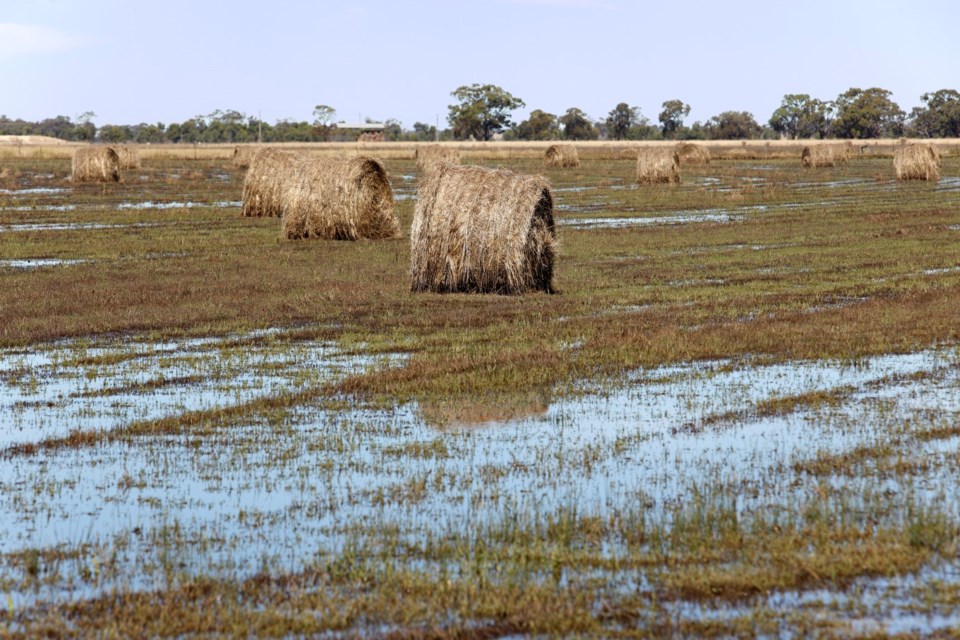Southeast Sasktchewan - While the rain and snow that the southeast region has received in the past six weeks have created challenges for some, it has provided the moisture that local producers have needed.
Sherri Roberts, a crops extension specialist with the Saskatchewan Ministry of Agriculture, said the entire southeast region has been shifted from drought status, to adequate or surplus moisture.
There is a small area in the Broadview area in need of precipitation, but that’s it for a region that spans from Ogema to the west, Highway 1 to the north, the Saskatchewan-Manitoba border to the east, and the Canada-U.S. border to the south. Forty-seven RMs are in her coverage area.
The stretch from Estevan to Carnduff was particularly dry until recently.
“It was really clear that they hadn’t gotten the snow. I was looking at half-empty dugouts and I was thinking ‘Oh my goodness, their dry conditions are going to continue once again for them,” said Roberts.
But the combination of the two April snowstorms and the heavy rains in May left full dugouts and sloughs filled with water.
“It’s all, I think, very good news,” said Roberts.
The Hume area, located east of Weyburn, had been really dry for the past three years, she said. There were also pockets southwest of Radville, and near Weyburn and Midale, that needed moisture.
“Now, the last couple of weeks here, they’ve had quite the recharge,” said Roberts.
The Redvers area was really dry before the second April snowstorm dumped wet and heavy snow.
The most recent crop report, released on May 12, showed that about seven per cent of the crop had been seeded in the southeast. Roberts concedes it’s below the five-year average, but she believes producers will be happy to have the moisture once the crops are seeded.
She said producers would rather find themselves in a situation with adequate or surplus moisture, than to seed into dusty and dry conditions, a situation that’s playing out in the southwest.
“They’re worrying about germination possibilities and over here, it’s just that we’re delayed. People sometimes get into that habit where they want to be done seeding by the end of May.”
Producers who have been able to get into the fields have been working long hours on nice days to get the crop into the ground, because they know the rain is coming.
If the rain does continue, then Roberts said some producers might have to look at changing around some of their rotations and going for some shorter-season crops, such as barley.
“I’m already told the cereal acres are up this year, canola acres are down, and those cereals, of course, they don’t need as many days for maturity, although the quicker you can get them in, the better it is, because they might miss that July-August heat,” said Roberts.
At this point, there isn’t a risk of widespread unseeded acres in the southeast. In some instances, the moisture will sit in the field. But she believes it’s too early to be worried.
If the southeast gets into the last week of May, and cool temperatures and more moisture are in the forecast, then it might be an issue.
“Do you have the proper amount of equipment and the labour you need to be putting in the acres that you need, or does a hiccup like this year put you behind the 8-ball, and then in that case, you maybe need to be looking at your rotations or expanding the amount of equipment you have,” said Roberts.
Roberts reminds farmers that the temperatures are going to warm up, so the soil temperatures might eventually be warmer when they put the crops into the ground.
“Germination is going to happen more quickly, and you may be able to make up that lost time. They’ve done studies, particularly at Indian Head, where they put soy beans into the ground, they put them in a little bit later. The later ones germinate and come up out of the ground a lot faster than the ones that were seeded early into that cold ground, and it made up for it.”
She also asked them to consider seed treatments, because root ruts could be a problem.



